If your computer's sound card is blown or not good enough, getting the best USB headset is a great way to get around that issue without spending more money than you have to.
But, of course, this is highly a matter of personal preferences and needs – which is why we are going to be listing our top 6 picks with their pros and cons. And from there on out, take your pick. So, without any further ado, let us get right into it!
Dislaimer
When it comes to compatibility, one thing to keep in mind is that most USB headsets are either compatible with PC, PS4/5, or both.
If you are after a USB headset for Xbox, in particular, check out our article for the best Xbox headsets, instead. And if we happen to have a headset that's also compatible with Xbox on this list, we'll make sure to let you know about it.
Quick Peek
- HyperX Cloud Alpha S: The best overall USB headset. It can also be used with a 3.5mm cable while offering great sound, superb build quality, great comfort, and even physical bass sliders
- Jabra Evolve 40 UC: A great pick for conference calls – but not so good for anything else
- Corsair HS60 Haptic: A headset that lets you feel the bass with haptic feedback. Particularly good for gaming but it doesn't bring much use outside of that case scenario
- Cooler Master MH630: Comes with probably the best microphone we've seen on a headset thus far – and it's not even expensive. But the overall sound signature is not ideal if you like a balanced setup
- Razer Blackshark V2: Probably the best Razer headset that you can grab if we are talking about USB options. Just keep in mind that, unlike most Razer headsets, this one is not too bassy
- Logitech H390: A great budget choice if you want something that gets the job done and doesn't sound bad
- Dislaimer
- Quick Peek
- 1. HyperX Cloud Alpha S: Best Overall USB Headset
- 2. Jabra Evolve 40 UC: Best USB Headset for Conference Calls
- 3. Corsair HS60 Haptic: Best Haptic Feedback Headset
- 4. Cooler Master MH630: Best Microphone
- 5. Razer Blackshark V2: Best Razer Headset (USB)
- 6. Logitech H390: Best Logitech Headset on a Budget
- FAQ
- Wrapping Up
1. HyperX Cloud Alpha S: Best Overall USB Headset
The HyperX Cloud 2 is one of our all-time favorite headsets and the Cloud Alpha S is an improved version in every single way. So, if you want an all-around great USB headset, it's impossible to go wrong with this one!
- Compatibility: PC (Can be used with consoles with its 3.5mm connector too)
- Connectivity: USB and detachable 3.5mm cable
- Features: Surround sound, removable cable, removable microphone, basic software, USB controls, and adjustable bass sliders
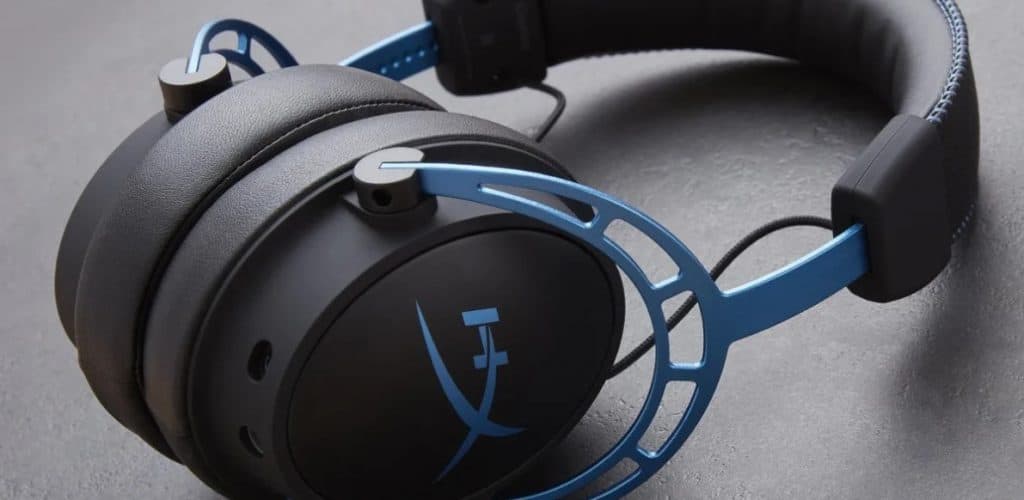
Many consider this to be the most comfortable headset that has ever been created. And if you don't have sensitive temples and/or a big head, that may very well be true. We are talking about soft earpads, spacious earcups, and decent padding on top, too.
Not to mention that you get two sets of earpads. One leatherette, and one with some kind of soft fabric.
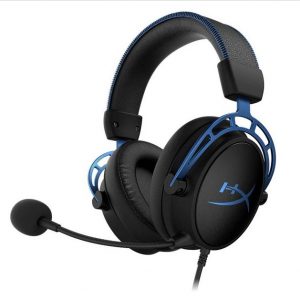
Compatibility is also another strong point that you get with the Alpha S. While the USB connector only works on PC, you can also just plug the headphones out of it and use the 3.5mm cable with consoles or portable devices as well.
When it comes to sound, both the bass and mids are balanced out of the box. But you can make the headset sound boomier with the bass sliders, if you are a basshead. Highs are a bit all over the place, to be honest – but your experience may vary.
Build quality is also superb thanks to the metal frame and the sturdy plastic hinges. Plus, the removable microphone and audio cable help a lot, too.
Pros:
- Great sound
- Adjustable bass with physical sliders
- Removable cable and microphone
- Superb build quality
- Can be used with both its USB sound card and 3.5mm cable
Cons:
- May be a bit tight for those with large heads or sensitive temples
- Mediocre software compared to some alternatives
2. Jabra Evolve 40 UC: Best USB Headset for Conference Calls
If you don't mind using a wireless headset instead of a USB one, the Mixcder E9 may be a better overall pick for both conference calls and mixed usage. But when it comes to USB headsets for conference calls, the Jabra Evolve 40 UC may be one of the best picks, if not the best.
- Compatibility: PC (Can be used with portable devices thanks to the detachable 3.5mm cable)
- Connectivity: USB and detachable 3.5mm cable
- Features: Removable cable with a 3.5mm to USB adapter to turn this into a USB headset
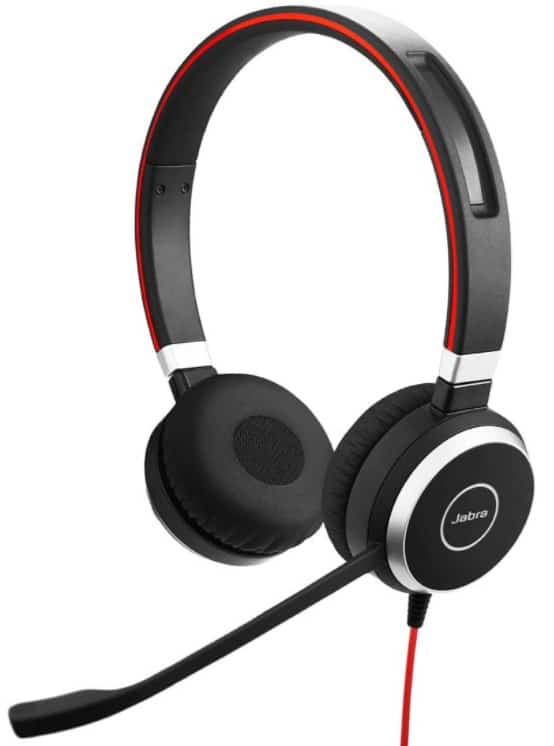
The first thing you notice with these headphones is that they have a different design. On-ear headphones are generally considered less comfortable, and the lack of padding on top here does not help much either.
But the strong point of on-ear headphones such as these is that they are extremely lightweight. If you don't mind a bit of clamping force literally on your ears, these are probably the only headphones that you can wear for a full 8-hour shift without feeling too weary.
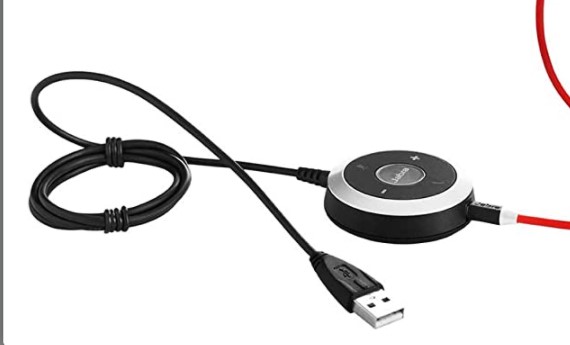
The fact that you can use it as both a USB headset or a 3.5mm one, depending on the device, is a big plus. But keep in mind that these are not the most portable headphones. They have less stability than your average gaming headset, so, unlike the Cloud Alpha, you'd have a rough time going for a run with these.
And you'd probably have a rough time doing anything else. The narrower soundstage can degrade your overall experience in both gaming and listening to music. For the same money, you could get any other HyperX Cloud Alpha headset for a better experience.
So, overall, this headset is really only great if we are talking about conference calls and working.
Pros:
- Extremely lightweight
- Works with both USB and 3.5mm ports
- LEDs are a welcome addition
- Removable audio cable
Cons:
- Narrower soundstage than other kinds of headphones (Except earbuds. These are the worst in terms of soundstage)
- Some may not find that kind of design comfortable
- Less stable than most headphones out there
3. Corsair HS60 Haptic: Best Haptic Feedback Headset
This is a unique headset in the aspect that it brings haptic feedback to the table for bass/low frequency sounds. This can be a nice addition when gaming – particularly in FPS games where there are often a lot of explosions.
Razer has a similar alternative, the Razer Nari Ultimate Wireless, but that's either or with a 3.5mm cable. Not with USB connector. And the version that uses a USB connection only does so for power; not for audio. So, the Corsair HS60 Haptic is pretty much your only pick if you are after a USB headset with haptic feedback.
- Compatibility: PC
- Connectivity: USB
- Features: Detachable microphone, haptic feedback, onboard controls, and Corsair iCUE software
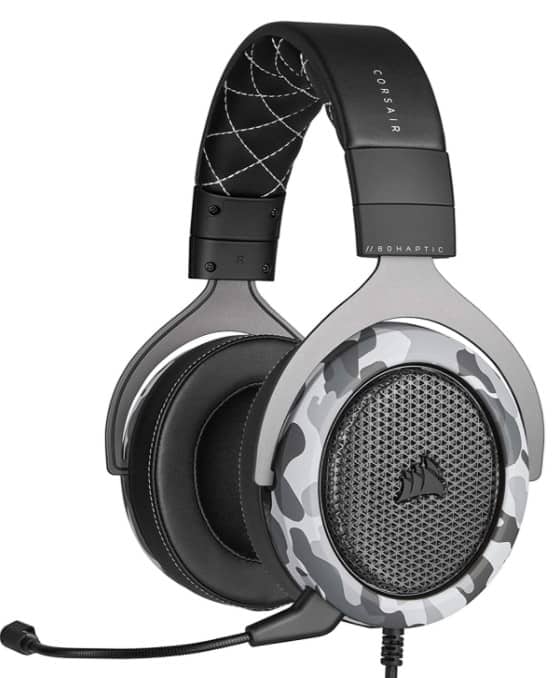
And if you don't like haptic feedback, you always have the option of either turning it off or lowering it by using the scroll wheel at the right part of the headset.
As far as sound signature is concerned, both the lows and highs are overemphasized. So, you get a headset that's both boomy and sharp or, in other words, kind of intense-sounding.
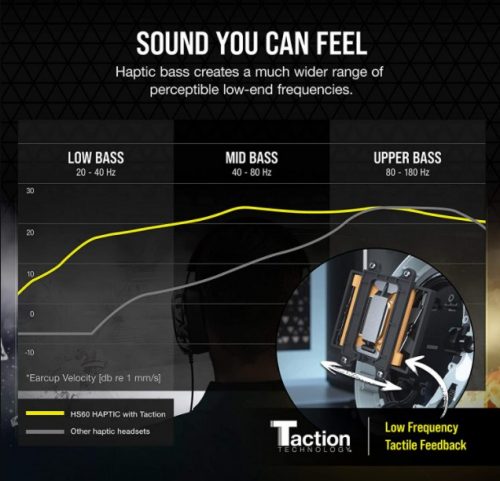
At this point, it's worth pointing out the the build quality is superb. The metal frame is sturdy and so are the plastic part and the fact that there are not a lot of moving parts only makes the headset feel even sturdier.
However, the cord is non-detachable. And that can be a deal-breaker if you are someone who can't be careful with cables. Cause if you damage it, the whole headset becomes useless.
Pros:
- Great build quality
- Haptic feedback is a welcome addition
- Pretty comfy (Unless you have sensitive temples since there is a bit of clamping force here)
- Great microphone
Cons:
- Poor noise isolation
- Both lows and highs are a bit overemphasized (Actually a pro if you like intense sound-signatures)
4. Cooler Master MH630: Best Microphone
Most people are mostly concerned about the audio that they get on their end – rather than what those on the other end hear – which is reasonable. But if you are also concerned about microphone quality, the Cooler Master MH630 is no doubt the best USB headset to check out!
- Compatibility: PC and PS4
- Connectivity: USB
- Features: Detachable cable and onboard controls
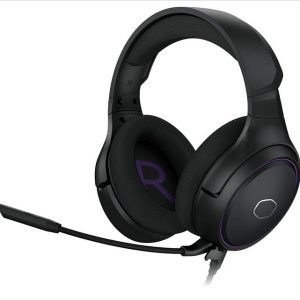
To be more detailed, its microphone sounds detailed, rich, and full. It's pretty satisfying considering that we are talking about a headset.
That aside, let's start with the sound signature of the headset. While the mids are very balanced, both the lows and highs are very overemphasized. This is an intense-sounding headset.
Comfort is not its strongest suit. Both the earpads and the padding on top have a mushy feeling – but at least the earcups are kind of big and the clamping force isn't too much. So, it's a passable score.
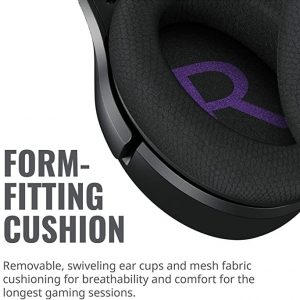
Build quality isn't that good either. Both the headset and its frame are made of plastic while the cord is non-detachable. But at least you can remove and replace the microphone.
Last, but not least, noise isolation isn't anything to brag about either. If you make an exception for the superb microphone, this is all-around a mediocre headset at best. But that's to be expected at this price point.
The RGB and onboard controls are both welcome additions. But, again, nothing worth bragging about.
Pros:
- Superb microphone
- Cheaper than most decent headsets out there
- Pretty comfy
- RGB is a welcome addition (Even though it doesn't make the headset any better)
Cons:
- Poor noise isolation
- Very overemphasized lows and highs (Unless you enjoy intense sound. In which case, that turns into a pro)
- Mediocre build quality
5. Razer Blackshark V2: Best Razer Headset (USB)
A cool thing about the Razer Blackshark V2 is that it comes with both a 3.5mm cable and a USB card if you want to use it strictly as a USB headset. So, that's cool if you need a headset for both PC, consoles, and maybe even portable devices as well.
Just keep in mind that unlike most Razer headsets, the Razer Blackshark V2 are not that boomy. The bass is still a bit overemphasized – but not to the degree of the Razer Kraken X, for example.
- Compatibility: PC, Xbox, and PC or portable devices if you use the 3.5mm cable
- Connectivity: USB and 3.5mm cable
- Features: Volume wheel, detachable microphone, and Razer Synapse software support
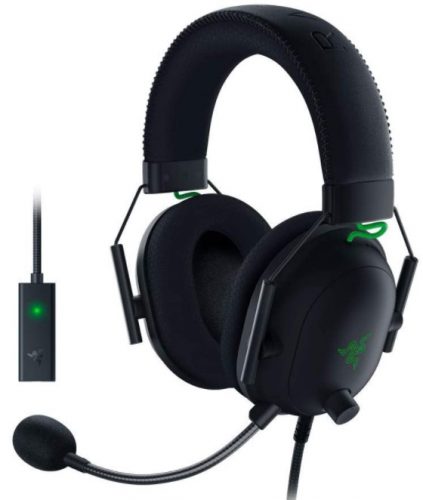
Speaking of sound, the Razer Blackshark V2 has a surprisingly balanced audio signature. Most Razer headsets are very bassy and also sharp to compensate for the strong bass. But this one is mostly balanced in the lows and mids with a bit of sharpness on the treble.
Comfort is generally pretty good. The earpads are soft, the padding on top is nice, and the clamping force is certainly not too much either.
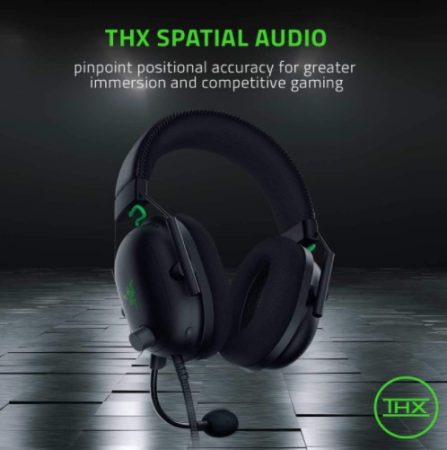
Build quality is mediocre at best. Most of the headset is plastic and the metal hinges don't feel particularly sturdy – not to mention that the audio cable is not removable. If you damage the cable, the whole headset becomes useless. But at least the microphone is detachable.
As for the microphone, the overall sound quality is not bad. But the noise handling of it is superb. So, apart from gaming, this is also a nice headset for chatting in an office environment – if you don't mind the somewhat gaming aesthetic of it.
Pros:
- Relatively balanced sound – if only a bit sharp
- Comes with both a 3.5mm cable and a USB card
- Pretty comfy
- The detachable microphone and volume wheel are both welcome additions
Cons:
- Mediocre build quality
- According to testing, the USB sound card increases the audio latency a bit (But whether that's noticeable or not in real-world conditions is questionable)
6. Logitech H390: Best Logitech Headset on a Budget
As far as headsets are concerned, around $100 is considered the sweet spot for most people. Any lower than that and you have to start making compromises. Any higher and you are at the point of getting diminishing returns.
But if you are after a budget pick that gets the job done, we'd definitely recommend the Logitech H390! It's currently priced at $36 while the older version can be found for as low as $20 or so.
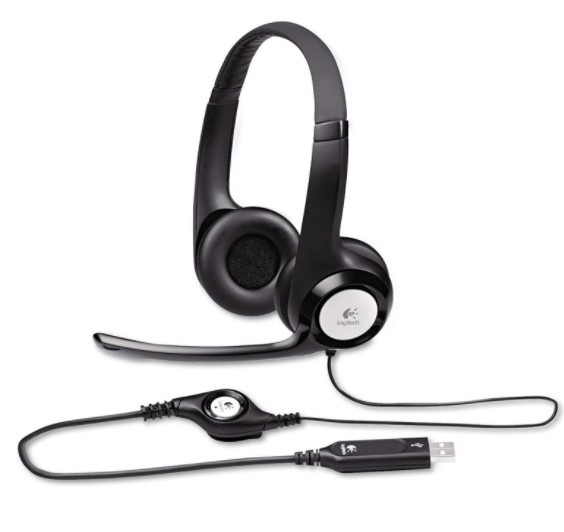
Since it wasn't made for anything more than chatting, there's really not much to say it. If you are after something that's made not only for chatting but also for music, watching movies, or especially playing games, we'd recommend looking elsewhere.
And even for chatting, the overall build quality of the headset, the sound, and the comfort levels are nothing worth getting excited for – which is to be expected at this price point.
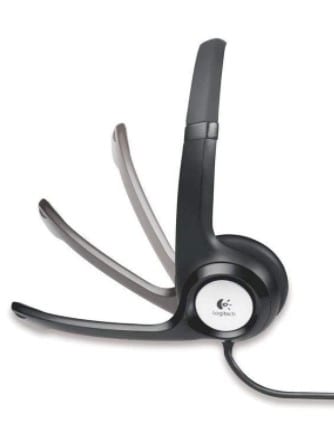
Also, both the audio cable and the microphone are non-detachable and that can be an issue in terms of durability. But at least the headset feels extremely lightweight. So, it's got that going for it.
Pros:
- Very cheap
- The retractable microphone is a welcome addition
- Extremely lightweight
- Gets the job done
Cons:
- Not sturdy at all
- Both the microphone and the audio cable are non-detachable
- Generally doesn't sound as good as our pricier picks
- Could be more comfortable
FAQ
How to Use Headphone Mic on PC
If your headset's mic doesn't work on PC, check out your audio settings to make sure that it's activated. Here's how:
- Right Click on the speaker icon at the bottom right part of your taskbar
- Left-click on "Open sound settings"
- Click on "Sound Control Panel" at the right part of the screen
- Then on the "Recording" tab
- Find your headset's microphone
- If it's disabled, right-click on it and select "Enable"
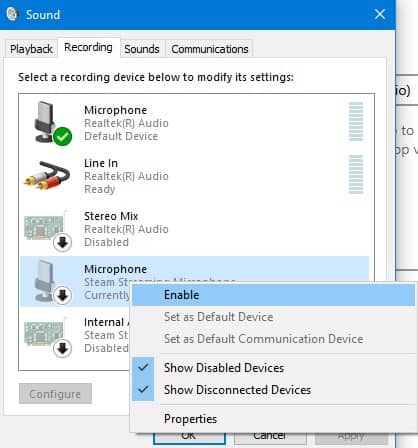
If it's enabled but it still doesn't work, make sure that it's not muted with onboard controls or that the software that you are using, such as Discord, it not muting it either.
USB VS Analog Headset – What's the Difference?
USB headsets have their own sound card while analog headsets rely either on your motherboard's audio or a dedicated sound card, if you have one. Both have their own pros and cons.
USB headsets are better if you have a bad sound card since you'll be getting better audio quality with them. But analog headsets can come ahead if you have a great sound card. Thankfully, options such as the HyperX Cloud Alpha S offer both a USB connection and an analog one, so, you get the best of both worlds.
Are USB Headphones Better?
Not necessarily. They can be just as good or bad as analog ones. However, when it comes to high-end gear, such as audiophile headphones, USB headphones and headsets are always going to be inferior cause you are going to be using a very high-end sound card and amp anyway.
Why Do I Need a USB Headset?
USB headsets can be lifesavers if your built-in sound card is blown or if it offers horrible audio quality. Other than that, they are not that much different than your average headset. In fact, they are even a bit less flexible due to the lack of a 3.5mm cable.
Why Choose a Wired USB Headset Over a Wireless One?
Wireless headsets are great as well. If you want to go with a wireless option, power to you. Just keep in mind that they are often pricier and their microphone not as good as what the wired alternatives offer. But the higher you go in pricing, the less that this gap in quality closes.
Why Are Detachable Audio Cables and Microphones Important?
Because they can severely increase the overall life span of a headset. With a detachable cable, if something goes wrong with it, just replace it and you are good to go. But if anything happens to a non-detachable cable, you'll have to throw the whole headset away.
Wrapping Up
These are our best USB headset picks for now. Do you have any other good recommendations? Feel free to let us and everyone else know about them in the comments section down below!
Also, if you like what you see, feel free to follow us on Facebook and Twitter for the latest news, reviews, listicles, apps, games, devices, how-to guides, and more!
